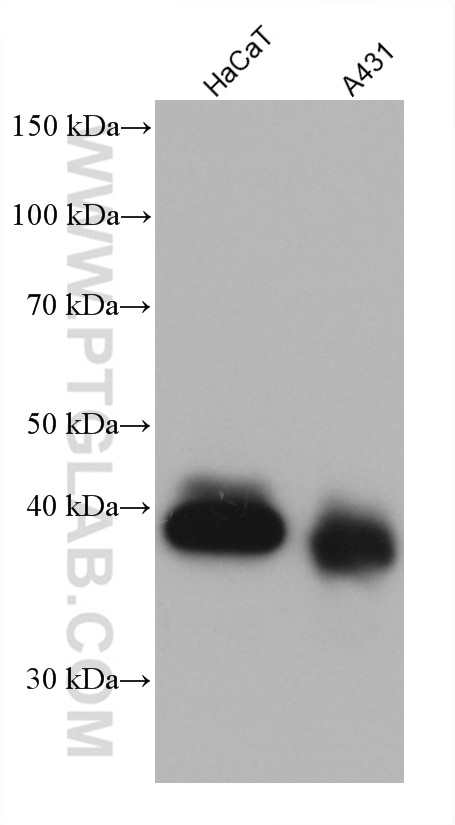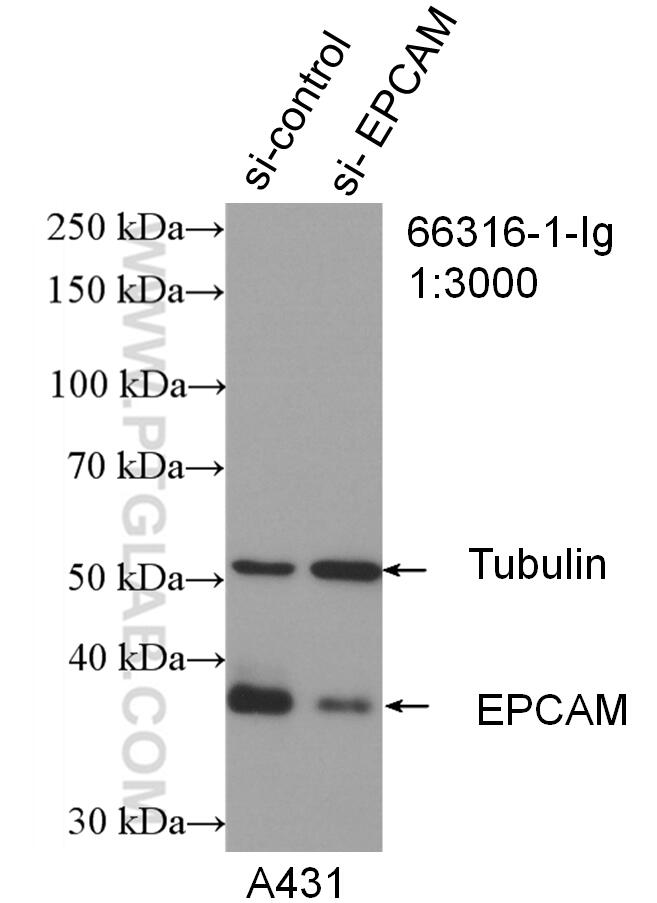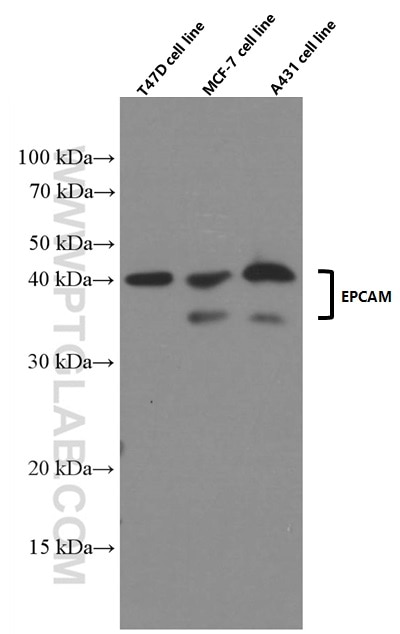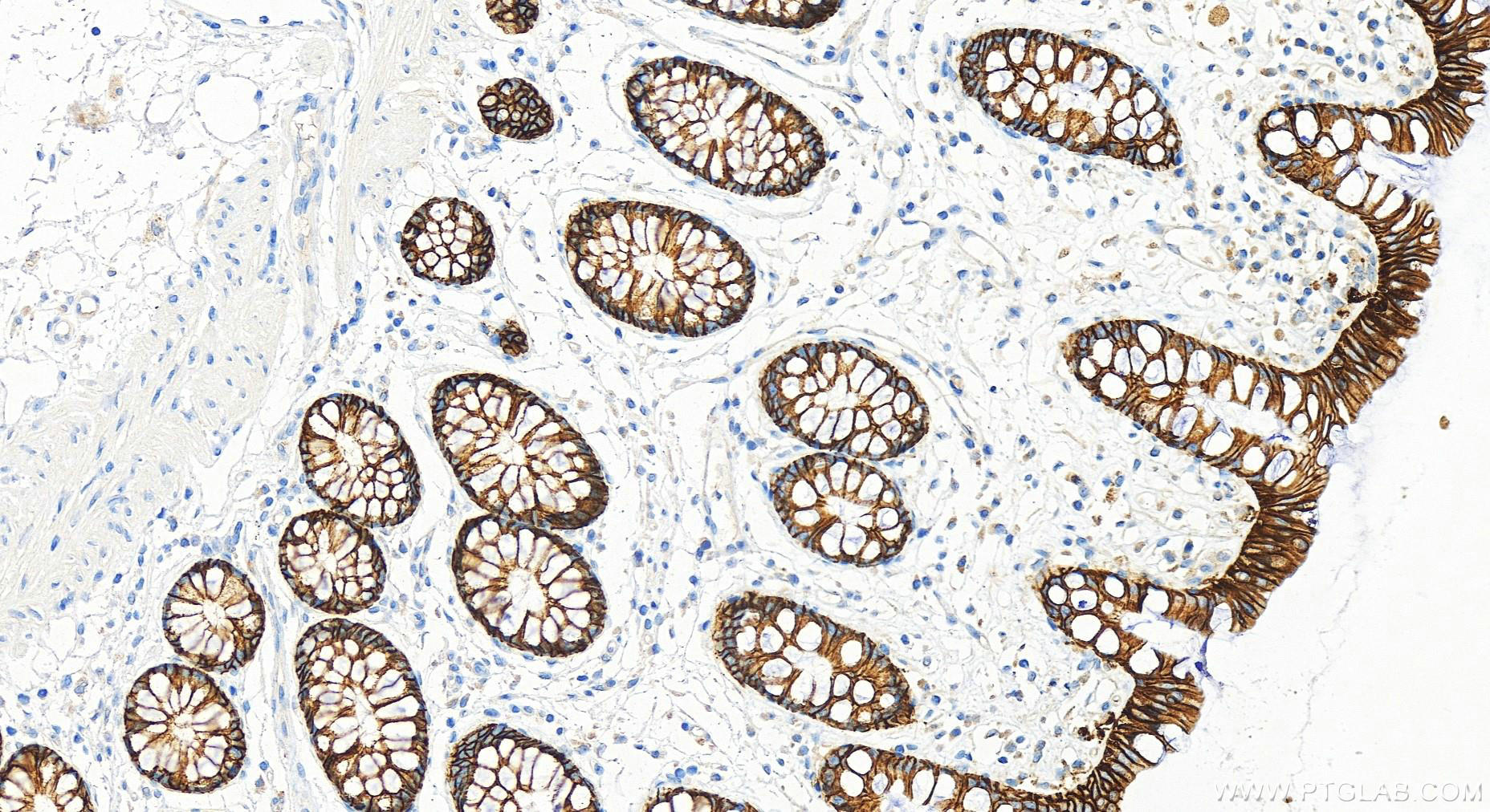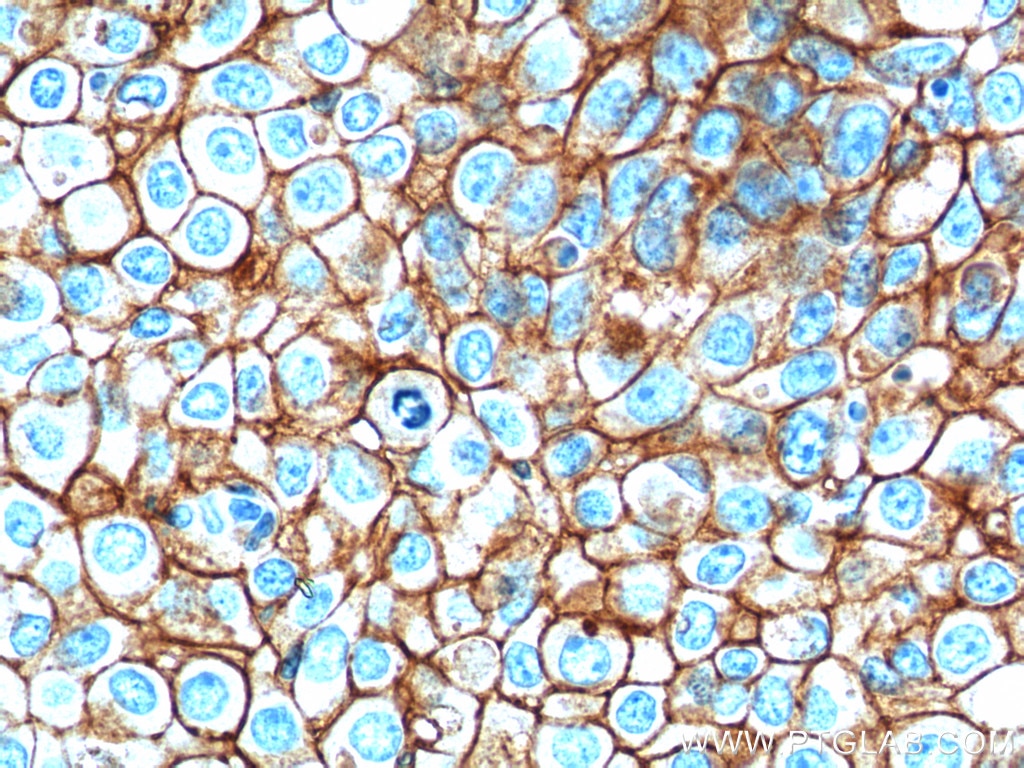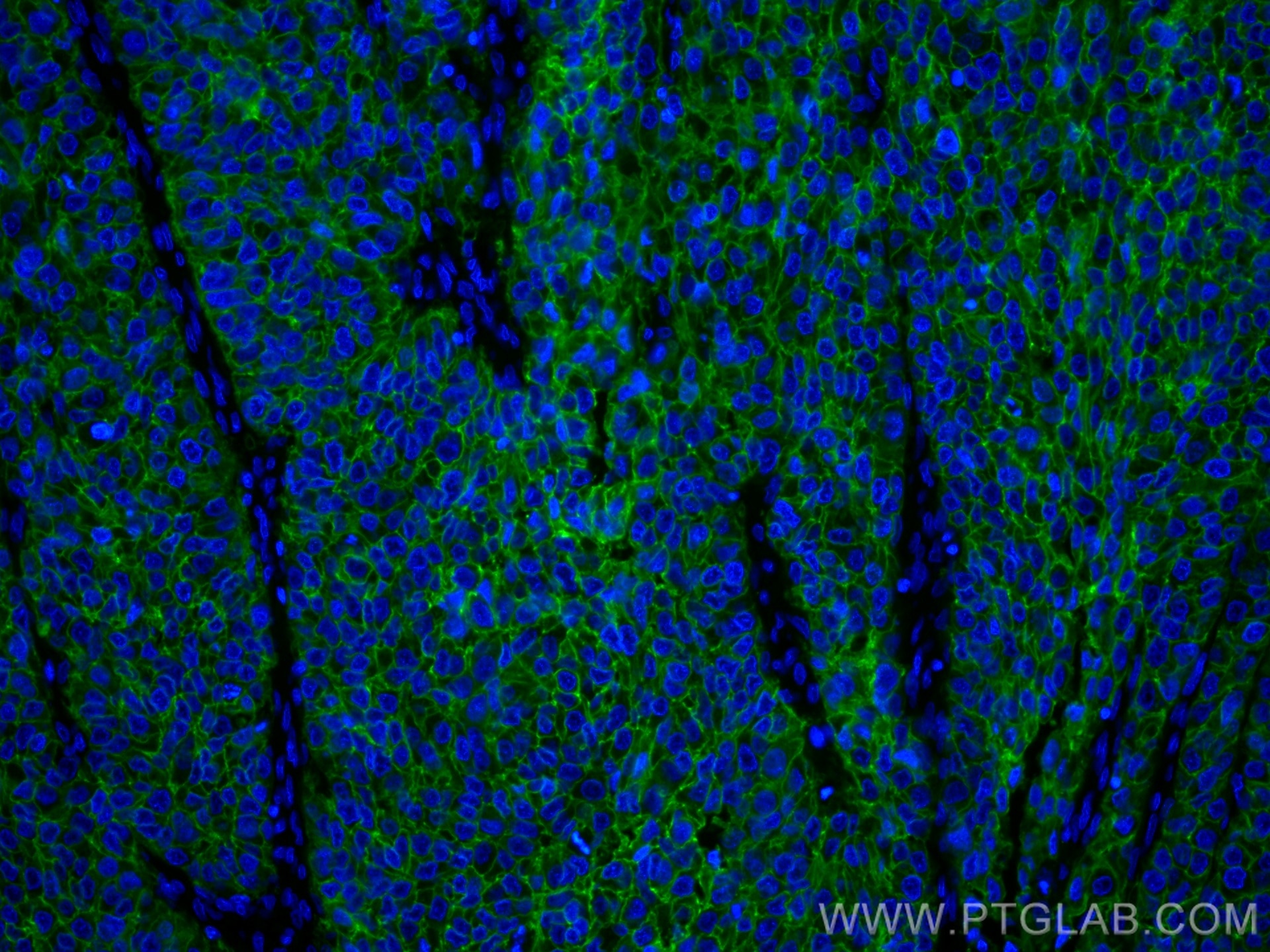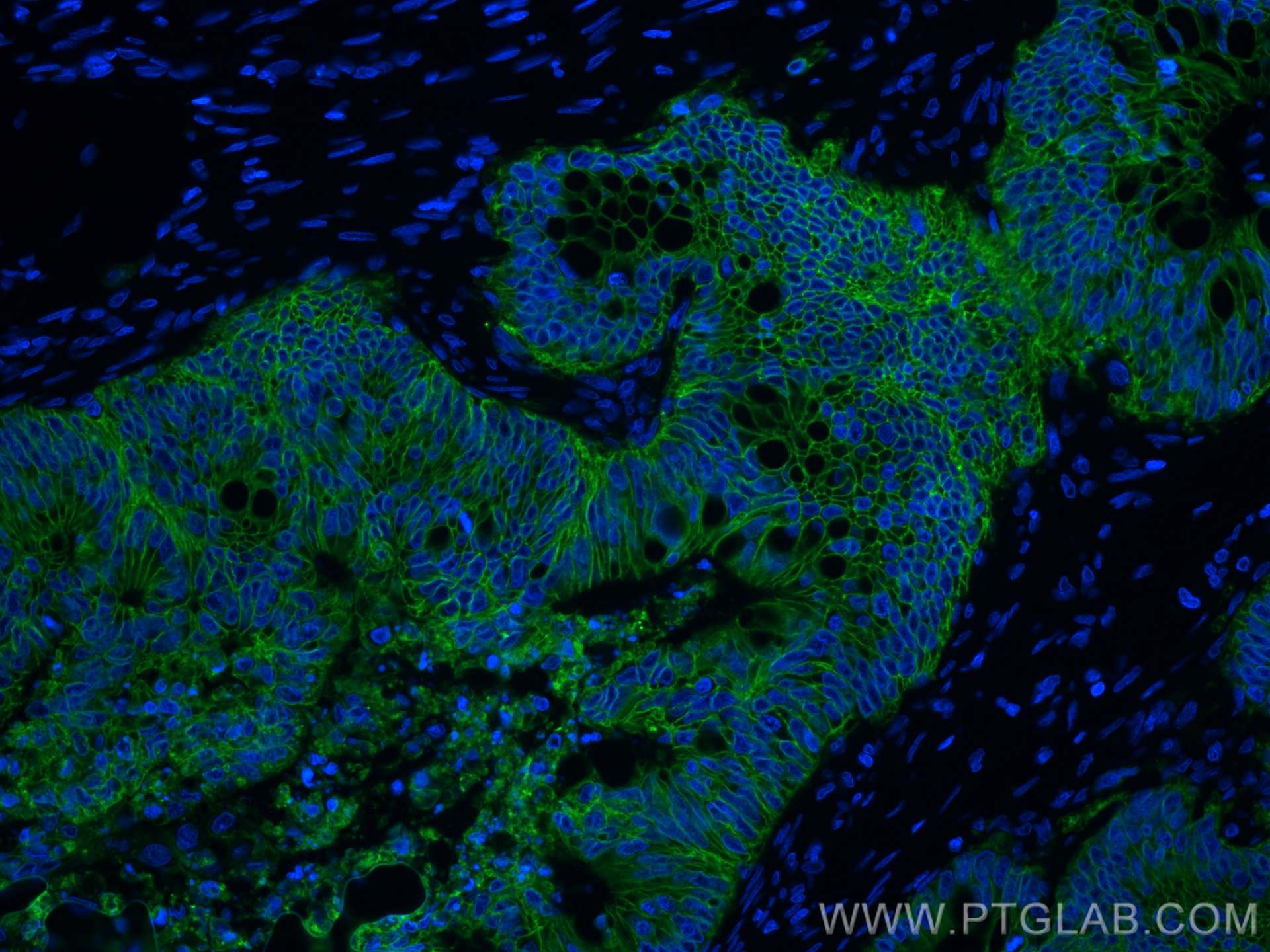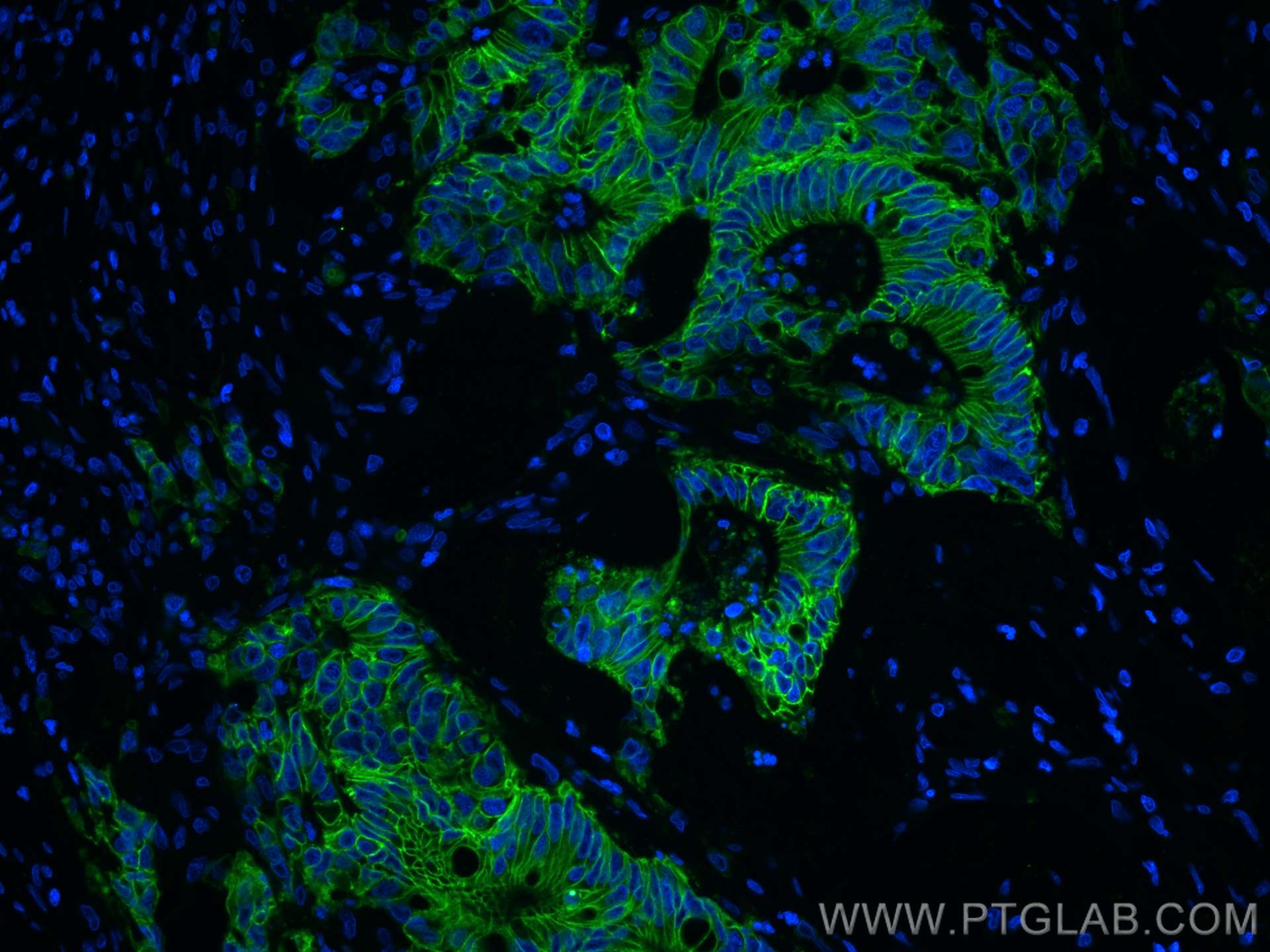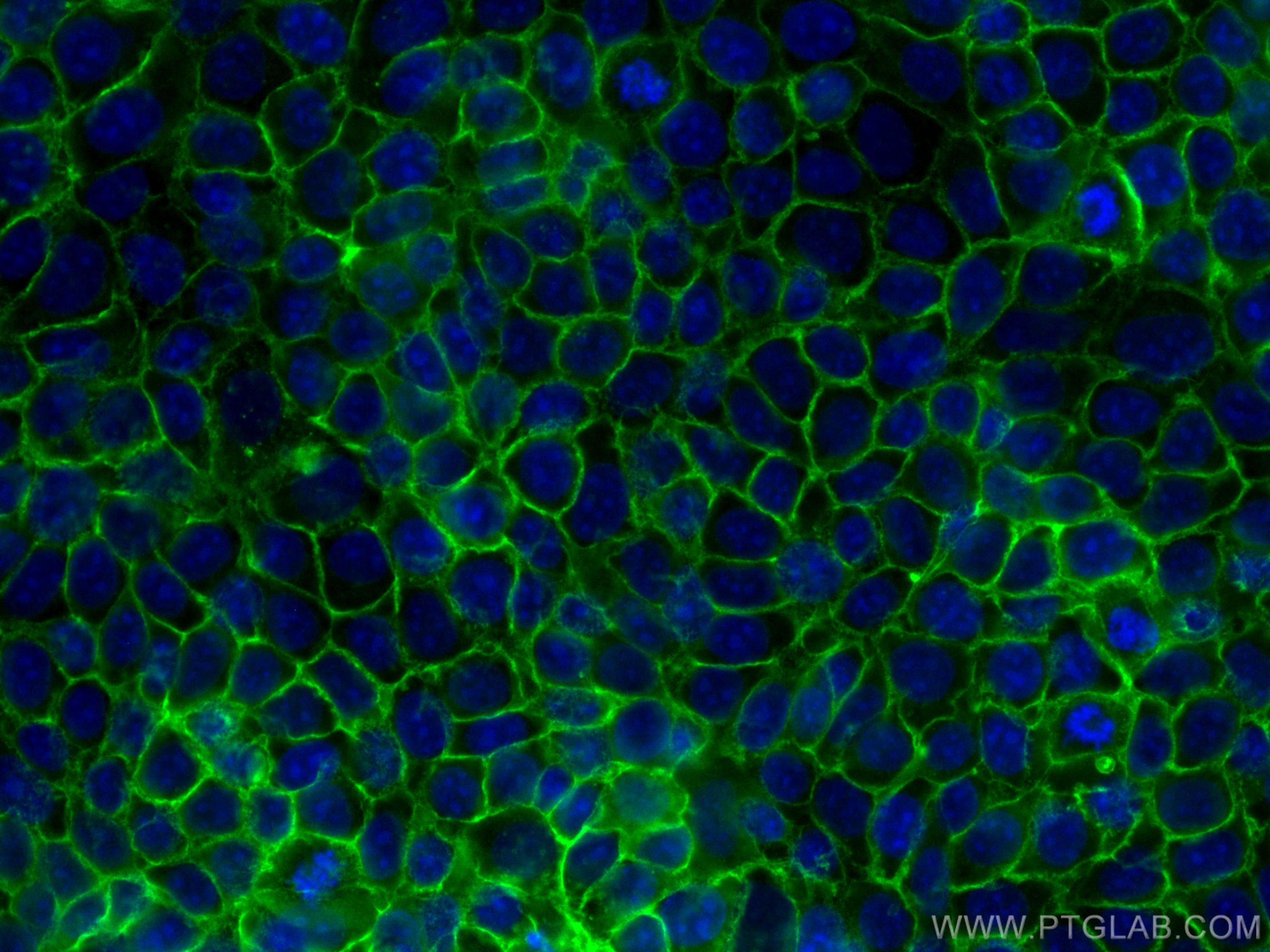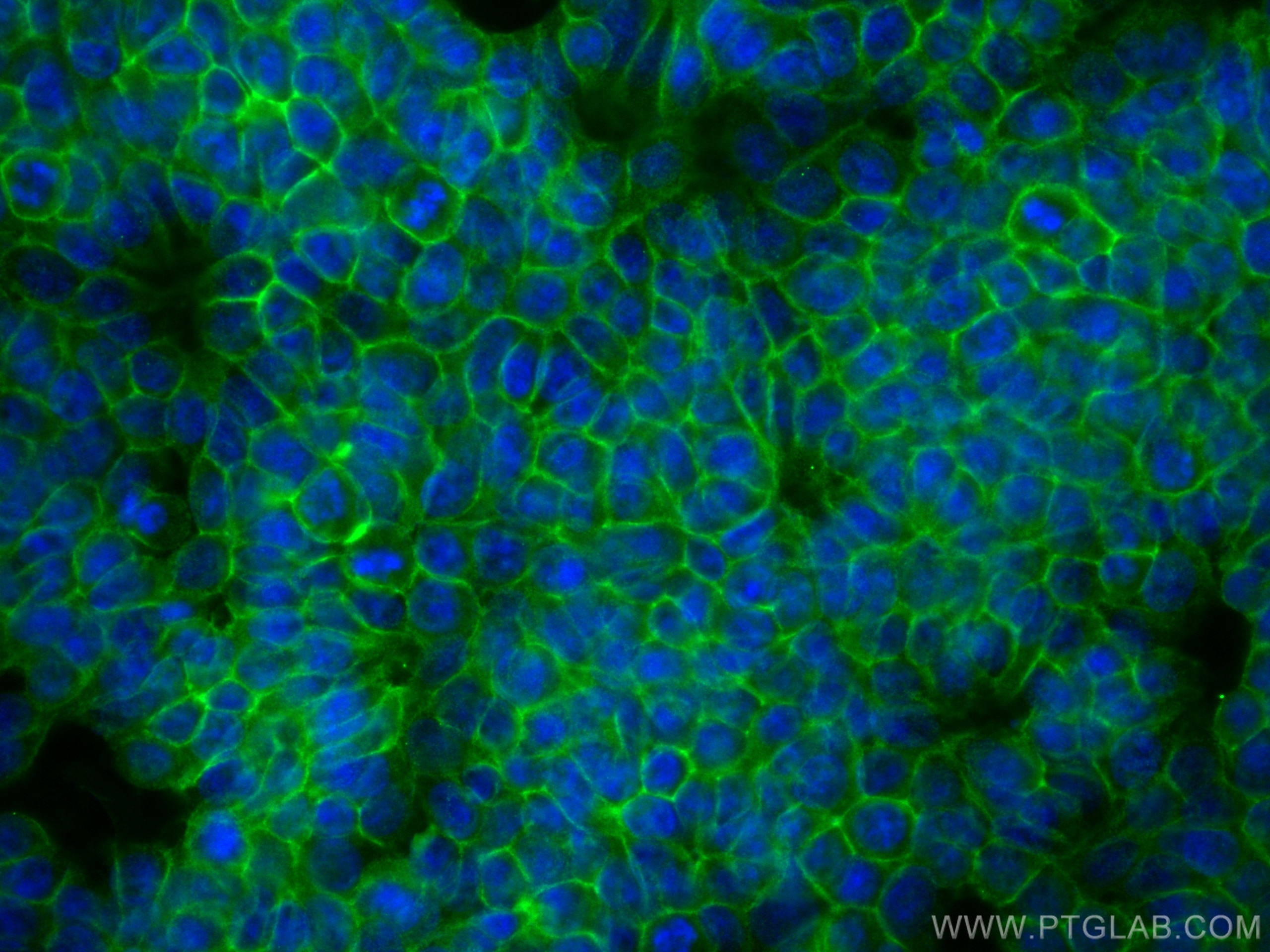- Featured Product
- KD/KO Validated
EPCAM/CD326 Monoklonaler Antikörper
EPCAM/CD326 Monoklonal Antikörper für WB, IHC, IF/ICC, IF-P, ELISA
Wirt / Isotyp
Maus / IgG2a
Getestete Reaktivität
human und mehr (1)
Anwendung
WB, IHC, IF/ICC, IF-P, ELISA
Konjugation
Unkonjugiert
CloneNo.
2A2D5
Kat-Nr. : 66316-1-Ig
Synonyme
Geprüfte Anwendungen
| Erfolgreiche Detektion in WB | HaCaT-Zellen, A431-Zellen, MCF-7-Zellen, T-47D-Zellen |
| Erfolgreiche Detektion in IHC | humanes Kolongewebe, humanes Mammakarzinomgewebe Hinweis: Antigendemaskierung mit TE-Puffer pH 9,0 empfohlen. (*) Wahlweise kann die Antigendemaskierung auch mit Citratpuffer pH 6,0 erfolgen. |
| Erfolgreiche Detektion in IF-P | humanes Kolonkarzinomgewebe, humanes Magenkrebsgewebe |
| Erfolgreiche Detektion in IF/ICC | MCF-7-Zellen, HT-29-Zellen |
Empfohlene Verdünnung
| Anwendung | Verdünnung |
|---|---|
| Western Blot (WB) | WB : 1:2000-1:10000 |
| Immunhistochemie (IHC) | IHC : 1:1000-1:4000 |
| Immunfluoreszenz (IF)-P | IF-P : 1:200-1:800 |
| Immunfluoreszenz (IF)/ICC | IF/ICC : 1:200-1:800 |
| It is recommended that this reagent should be titrated in each testing system to obtain optimal results. | |
| Sample-dependent, check data in validation data gallery | |
Veröffentlichte Anwendungen
| KD/KO | See 1 publications below |
| WB | See 6 publications below |
| IHC | See 1 publications below |
| IF | See 4 publications below |
Produktinformation
66316-1-Ig bindet in WB, IHC, IF/ICC, IF-P, ELISA EPCAM/CD326 und zeigt Reaktivität mit human
| Getestete Reaktivität | human |
| In Publikationen genannte Reaktivität | human, Maus |
| Wirt / Isotyp | Maus / IgG2a |
| Klonalität | Monoklonal |
| Typ | Antikörper |
| Immunogen | EPCAM/CD326 fusion protein Ag15393 |
| Vollständiger Name | epithelial cell adhesion molecule |
| Berechnetes Molekulargewicht | 314 aa, 35 kDa |
| Beobachtetes Molekulargewicht | 35-40 kDa |
| GenBank-Zugangsnummer | BC014785 |
| Gene symbol | EPCAM |
| Gene ID (NCBI) | 4072 |
| Konjugation | Unkonjugiert |
| Form | Liquid |
| Reinigungsmethode | Protein-A-Reinigung |
| Lagerungspuffer | PBS with 0.02% sodium azide and 50% glycerol |
| Lagerungsbedingungen | Bei -20°C lagern. Nach dem Versand ein Jahr lang stabil Aliquotieren ist bei -20oC Lagerung nicht notwendig. 20ul Größen enthalten 0,1% BSA. |
Hintergrundinformationen
Epithelial cell adhesion molecule (EpCAM, CD326) is a type I transmembrane glycoprotein that functions as a homophilic, epithelial-specific intercellular cell-adhesion molecule. In addition to cell adhesion, EpCAM is also involved in cellular signaling, cell migration, proliferation, and differentiation. EpCAM is highly expressed on most carcinomas and therefore of potential use as a diagnostic and prognostic marker for a variety of carcinomas, and has become a therapeutic target. EpCAM may occur in distinct forms due to glycosylation. (PMID: 20837599; 19249674; 21576002; 22647938; 12691820)
Protokolle
| PRODUKTSPEZIFISCHE PROTOKOLLE | |
|---|---|
| WB protocol for EPCAM/CD326 antibody 66316-1-Ig | Protokoll herunterladen |
| IHC protocol for EPCAM/CD326 antibody 66316-1-Ig | Protokoll herunterladenl |
| IF protocol for EPCAM/CD326 antibody 66316-1-Ig | Protokoll herunterladen |
| STANDARD-PROTOKOLLE | |
|---|---|
| Klicken Sie hier, um unsere Standardprotokolle anzuzeigen |
Publikationen
| Species | Application | Title |
|---|---|---|
Acta Biomater Tumor cell membrane-based peptide delivery system targeting the tumor microenvironment for cancer immunotherapy and diagnosis. | ||
Biosens Bioelectron Spherical nucleic acids-based cascade signal amplification for highly sensitive detection of exosomes. | ||
Mol Ther Nucleic Acids miR-552 Regulates Liver Tumor-Initiating Cell Expansion and Sorafenib Resistance. | ||
Cell Death Dis Mutations in the coat complex II component SEC23B promote colorectal cancer metastasis. | ||
Cell Death Discov MCM2 promotes the stemness and sorafenib resistance of hepatocellular carcinoma cells via hippo signaling |
Rezensionen
The reviews below have been submitted by verified Proteintech customers who received an incentive for providing their feedback.
FH Guorong (Verified Customer) (03-31-2022) | Seems not good for ARPE-19 cells
 |
